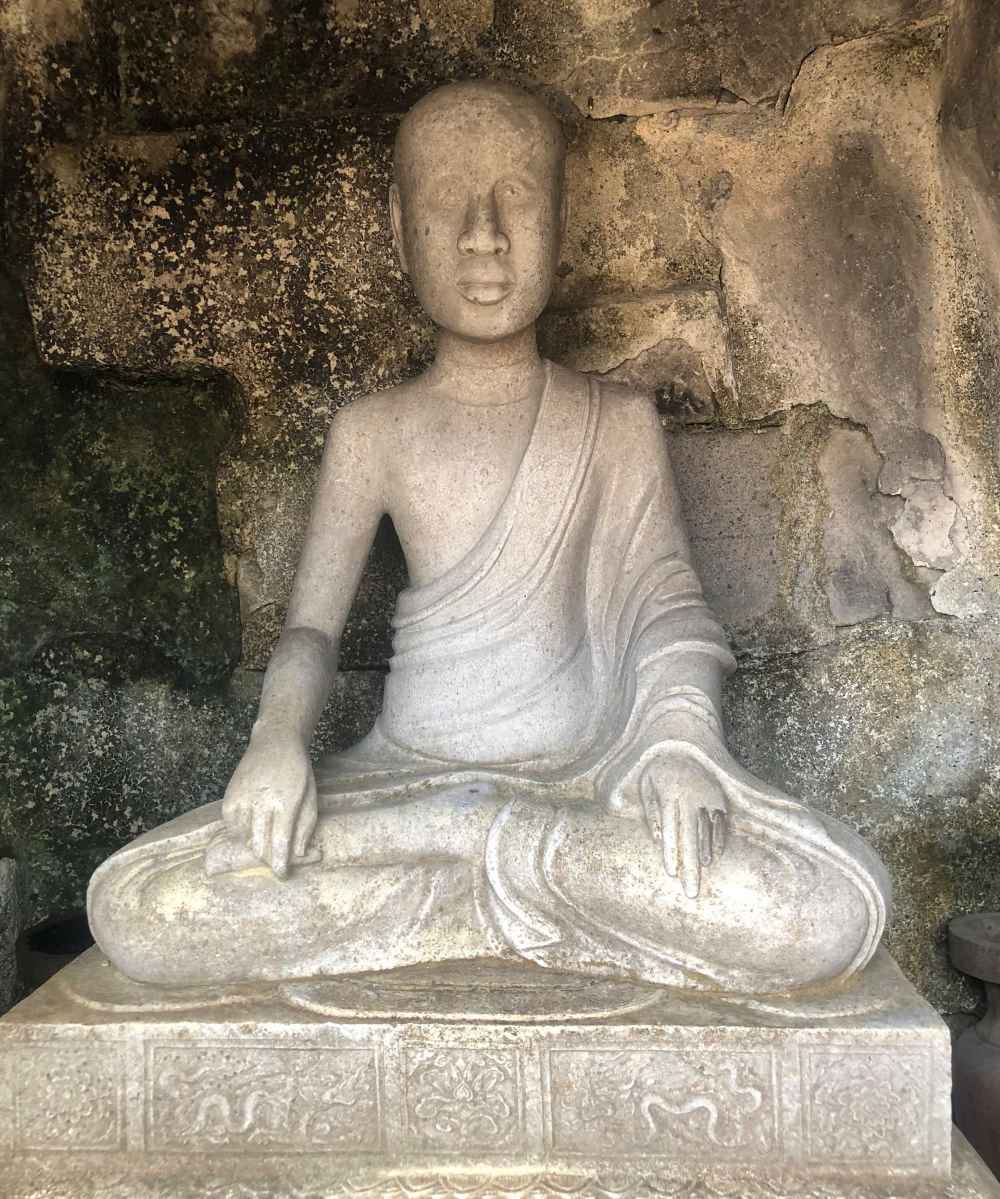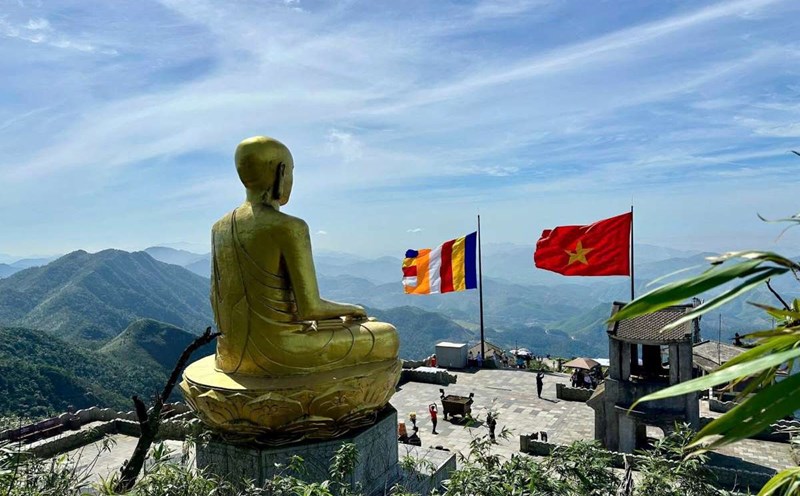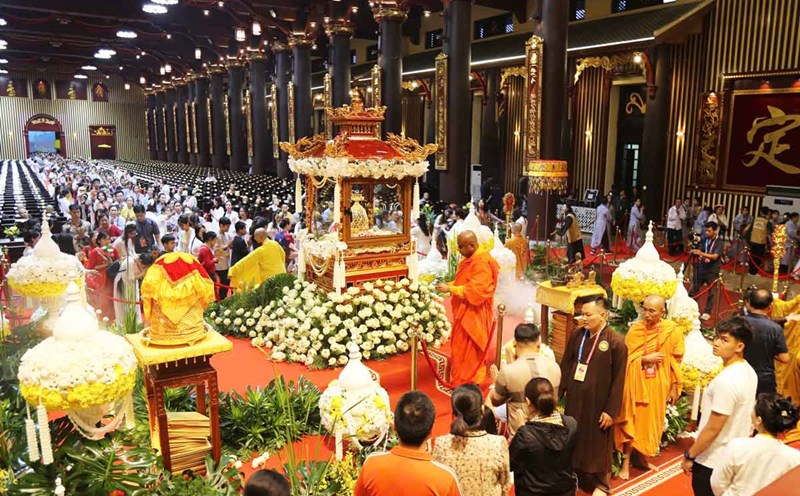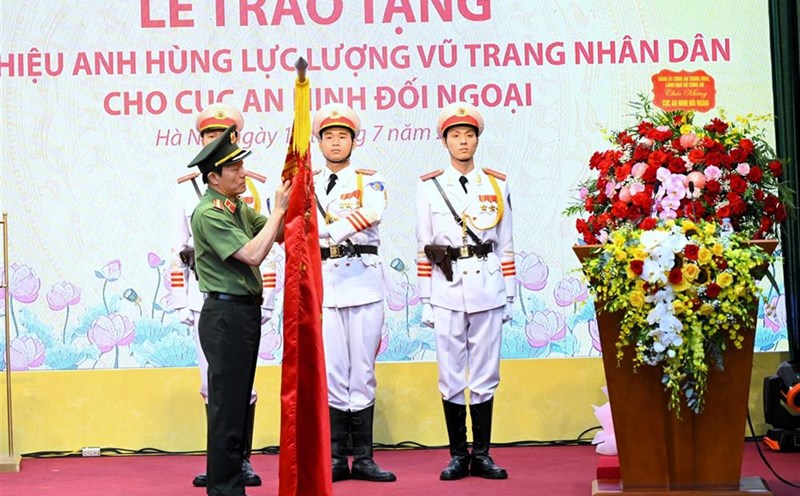The meeting to consider recognizing Yen Tu - Vinh Nghiem - Con Son Complex, Kiep Bac as a World Heritage Site is scheduled for 12:00 on July 21, 2025 (Paris time), which is about 17:00 on the same day as Vietnam time.
The meeting was broadcast live on UNESCO's official website at: https://whc.unesco.org/en/sessions/47com
This is the first time at an annual UNESCO meeting that all daily meetings have been broadcast publicly on UNESCO's official website.
Vietnam nominated Yen Tu - Vinh Nghiem - Con Son Kiep Bac Complex to center on Truc Lam Zen sect - a Buddhist Sangha founded by Buddha Tran Nhan Tong in the 13th century, which plays a role in linking many places, events, and figures in history.
Started in 2012, over the past 13 years, the authorities have coordinated with ICOMOS (UN UNESCO's professional consulting unit) and international experts to survey and appraise the site in Quang Ninh, Hai Phong (old Hai Duong province) and Bac Ninh (old Bac Giang province) - where the heritage complex is located.
According to the nomination documents, the complex has a total core area of 525.75 hectares, the total buffer zone area is 4,380.19 hectares. In which, the core area consists of 12 main heritage components, fully reflecting the stages of formation, spread and revival of Truc Lam Zen sect.
The above 12 components include:
1. Hoa Yen Pagoda, Yen Tu, Quang Ninh Province: Monk worship center of King Tran Nhan Tong, where Truc Lam Zen sect was formed.
2. Am Ngoa Van, Yen Tu, Quang Ninh Province: Where the Buddha entered the dead, considered the most sacred site of Zen.
3. Thai Mieu, Quang Ninh: Ancient meditation sites on the Yen Tu pilgrimage route, representing the practice of recitation in the sacred forest.
4. Bach Dang Deck Bridge (Yen Giang), Quang Ninh: a physical historical relic, reflecting the ideology of world domination and the spirit of protecting peace and national independence.
5. Lan Pagoda (Long Dong), Quang Ninh: Interdisciplinary and training center for talent enhancement, associated with Truc Lam's Buddhist organization activities.
6. Con Son Pagoda, old Hai Duong Province (now Hai Phong): Monastery of the Huyen Quang Three groups, the center for the development of the world-class Zen ideology.
7. Kien Bac Temple, old Hai Duong Province (now Hai Phong): associated with Tran Hung Dao, a symbol of the combination of national security household and Truc Lam Buddhist spirit.
8. Thanh Mai Pagoda, old Hai Duong province (now Hai Phong): This place is associated with the life and career of Zen master Phap Loa, the second founder of the Truc Lam Tam To Zen sect, when he monkzed, compiled kinhits and books about Buddhism during his lifetime.
9. Kinh Chu Cave, the old Hai Duong Province (now Hai Phong): Compared to the 'Nam Thien Duoc Hoang' which is the sixth most beautiful cave in Vietnam.
10. Nham Duong Pagoda, old Hai Duong Province (now Hai Phong): Monastery of Venerable Thuy Nguyet, the abbot of Thong Giac Dao Nam Thien su.
11. Bo Da Pagoda, old Bac Giang province (now Bac Ninh): A place for performing and training to increase them, standing out with an ancient document system and unique tower garden.
12. Vinh Nghiem Pagoda, old Bac Giang province (now Bac Ninh): Center for printing and preserving more than 3,000 Truc Lam bronze trees, recognized by UNESCO as a world documentary heritage.
The relic complex is a sacred cultural landscape synchronously planned with hundreds of pagodas, temples, towers and ancient relics, spread across 3 provinces and cities, connected into a unified body in both space and spirituality.

This is an inter-provincial nomination dossier of Vietnam, with special significance in terms of religion, culture and history, which has existed for more than 700 years and has become a living cultural heritage.
The unique feature of Truc Lam Buddhism is that the only Buddhist Zen sect in the world was founded by a king. Truc Lam harmonizes Dai Su Buddhist ideology with Confucianism, Taoism, Vietnamese cultural traditions and indigenous beliefs, creating a unique spiritual and philosophical identity, expressing the rare intersection between religion, government and culture, promoting the values of peace, harmony and reconciliation.
Truc Lam's influence extends beyond the national scope, spreading throughout the region and the world. Currently, Truc Lam Buddhism has more than 30 million followers, 50,000 monks and 15,000 pagodas in more than 30 countries such as Korea, India, the US, the UK, Japan and many other countries. In France, Truc Lam Paris Pagoda is notably mentioned and in the US, there is the Tran Nhan Tong Award for Peace.











